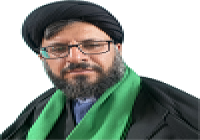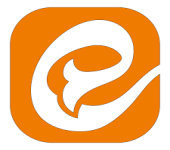Embryology
The description of the development of the human baby in the womb of the mother has been described in several places in the Holy Qur'án. Modern scientists marvel at the accuracy of the process described in its verses.
The Holy Qur'án says:
He creates you in the womb of your mothers, in stages, one after another,
in three (veils of) darkness.
He is Alláh, your Lord. His is the kingdom (authority). There is no god but He, where then do you turn away? (az Zumar 39:6)
The stages in the development of human embryos was not described until the 20th century. According to modern scientific knowledge, the three veils of darkness may refer to: (1) the anterior abdominal wall; (2) the uterine wall; and (3) the amniochorionic membrane - see Figure 1.
Figure 1
Drawing of a sagittal section of a female's abdomen and pelvis showing a foetus in utero. Veils of darkness are:
the anterior abdominal wall;
the uterine wall, and
the amniochorionic membrane
Verily, We created man from an extract of clay,
Then We made him of a drop (Nutfah), in a firm resting place;
Then We made the drop into a leech-like (clinging) structure (`Alaqah), then we made the leech-like structure into a lump of chewed flesh (Mudghah)
and we made the lump of chewed flesh into bones (`Idhama), then We clothed the bones with flesh (Lahma);
thereafter We caused it to grow into another creation.
So blessed be Alláh, the best of creators. (al Mu’minún, 23:13,14)
The drop or Nutfah is usually translated as the sperm, but a more meaningful interpretation would be the zygote which divides to form a blastocyst which is implanted in the uterus (the firm resting place).
The word `Alaqah refers to a leech or bloodsucker. This is an excellent description of the human embryo from days 7-24 when it clings to the wall of the uterus, in the same way that a leech clings to the skin. It is remarkable how much the embryo of 23-24 days resembles a leech - see Figure 2.
Figure 2
A drawing of a leech or bloodsucker and below a drawing of a 24 day-old human embryo. Note the leech-like appearance of the human embryo at this stage.
The word Mu_ghah means chewed substance or chewed lump. Toward the end of the fourth week, the human embryo looks somewhat like a chewed lump of flesh - see Figure 3. The chewed appearance results from the somites which resemble teeth marks. The somites represent the beginnings of the vertebrae.
Figure 3
A plasticine model of the human embryo which has the appearance of chewed flesh. Right, a drawing of a 28 day-old human embryo showing bead-like somites which resemble the teeth marks in the model shown to the left.
"And we made the lump of chewed flesh into bones (`Idhama), then We clothed the bones with flesh (La<ma)" The verse indicates that out of the chewed lump stage, bones and muscles form. This is in accordance with embryological development. First the bones form as cartilage models and then the muscles (flesh) develop around them.
"Thereafter We caused it to grow into another creation." This next part of the verse implies that the bones and muscles result in the formation of another creature. This may refer to the human-like embryo that forms by the end of the eighth week. At this stage it has distinctive human characteristics After the eighth week, the human embryo is called a foetus. This may be the new creature to which the verse refers.
The interpretation of the verses in the Holy Qur'án referring to human development would not have been possible in the 7th century A.D., or even a hundred years ago. We can interpret them now because the science of modern embryology affords us new understanding. Undoubtedly there are other verses in the Holy Qur'án that will be better understood in the future as our knowledge increases.
References
The Holy Qurán, S V MÃr Ahmad `AlÃ
"Before we are Born", Keith L. Moore, Ph.D., F.I.A.C, Professor of Anatomy and Associate Dean, Basic Sciences, Faculty of Medicine, University of Toronto, Canada.










